The global energy landscape is undergoing a significant transformation, with an increasing focus on sustainability and a drive to transition away from fossil fuels. As we stand at the precipice of this energy transition, the choices we make today will shape the future of our planet. The opportunities for powering our world are expanding rapidly, with renewable energy sources such as solar and wind leading the way. Additionally, alternative sources like hydrogen and nuclear fission are showing great promise in the pursuit of a cleaner, more sustainable energy future.
In this article, we will explore the possibilities and challenges associated with the energy transition, taking a closer look at the innovations that are driving change and the obstacles that must be overcome.
The Current Energy Landscape
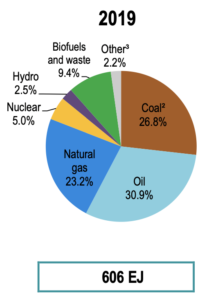
According to statistics released by the International Energy Agency, 80.9% of global energy came from fossil fuels, 9.4% from biofuels and waste, 5.0% from nuclear energy, 2.5% from hydro energy, and the remaining 2.2% from other sources in 2019.
Today’s energy landscape is largely characterised by its over-reliance on fossil fuels such as coal, oil and natural gas. These have detrimental impacts on the environment. Alternative sources of cleaner energy such as solar, wind and hydrogen are being increasingly adopted. Yet, the extent of technological advancement needed to effectively facilitate the energy transition is still nowhere in sight.
Challenges
Environmental Degradation
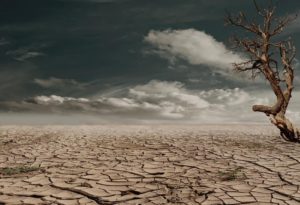
The combustion of fossil fuels such as coal, oil and natural gas causes large amounts of greenhouse gases to be released into the atmosphere, trapping heat and causing global temperatures to rise. This may lead to climate change, resulting in rising sea levels, unpredictable precipitation problems and extreme weather events.
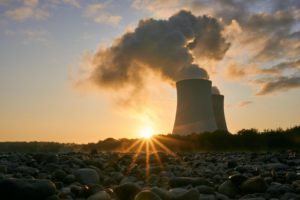
The combustion of fossil fuels also releases a variety of pollutants into the atmosphere including sulphur dioxide and nitrogen oxides. These gases contribute to smog and can cause respiratory problems. They can also react with rain water to form acid rain, which can corrode buildings, destroy marine life and damage ecosystems.
Energy Security

The Russia-Ukraine war has led to a global energy crisis. Due to supply-chain disruptions from one of the world’s major oil supplier, Russia, this has in turn driven up energy prices. This increases the number of households unable to afford energy – especially those in developing countries.
Furthermore, due to political tensions, Russia has cut gas flows to the EU by 80% between May and October 2022. This has caused a significant shortage in the EU’s energy mix. This highlights the over-reliance on major fuel-exporting countries, making the diversification towards alternative or domestic sources of energy a pressing need.
Affordability

Historically, sustainable energy sources, such as solar and wind, have been more expensive than traditional energy sources such as coal, oil, and natural gas. This has posed a significant barrier to the large-scale adoption of sustainable energy sources, as many countries and businesses tend to prioritise cost savings at the expense of the environment.
There are several reasons why sustainable energy sources still remain relatively more expensive today.
Firstly, the technology used to harness these sources of energy is still relatively new and needs large investments. For instance, although the cost of solar panels has decreased significantly in recent years, substantial initial investment is still required to install a solar panel system.
Secondly, sustainable energy sources often require additional infrastructure to support them. For instance, wind turbines need a significant amount of land and transmission infrastructure in order to connect to the electrical grid. When produced on a large-scale, these costs can add up quickly. This makes sustainable energy sources more expensive than traditional sources of energy.
Recent Innovations & Developments
Alternative Sources of Energy
In the past, we used to heavily rely on oil. Today, we rely on natural gas, solar and wind energy. In the future, we are projected to rely more heavily on geothermal energy, nuclear fission, hydrogen fuel etc.

Geothermal energy is a renewable source of energy. It comes from the heat that is naturally generated within the Earth’s core. This heat energy can be harnessed and used for various purposes such as generating electricity, heating buildings, and providing hot water.
Geothermal energy is typically harnessed by drilling deep wells into the ground to access the hot water and steam that is naturally present in the Earth’s crust. The hot water or steam is then used to power turbines and generate electricity, or it can be directly used for heating or cooling buildings.
There are three main types of geothermal power plants: dry steam, flash steam, and binary cycle. Dry steam plants use steam directly from the Earth’s crust to power turbines, while flash steam plants use hot water that is flashed into steam as it rises to the surface. Binary cycle plants use a heat exchanger to transfer heat from the hot water or steam to a secondary fluid that has a lower boiling point. This secondary fluid then vapourises and drives a turbine.
Advantages:
- Geothermal energy is a clean and sustainable source of energy that has a much smaller environmental footprint than fossil fuels.
Gaps:
- It is not widely available in all areas and can be expensive to develop in some locations.
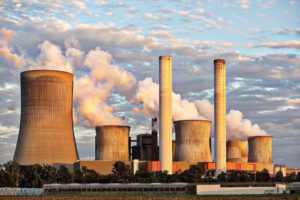
Nuclear fission is a process in which the nucleus of an atom is split into two or more smaller nuclei, releasing a large amount of energy in the form of heat and radiation. This process is the basis of nuclear power plants, which use the heat generated by nuclear fission to produce steam, which in turn drives turbines to generate electricity.
Nuclear energy does not produce carbon dioxide or other greenhouse gases, making it a cleaner source of energy. However, nuclear energy does produce radioactive waste, which must be carefully stored and disposed of.
Advantages:
- Clean source of energy that does not generate greenhouse gases such as carbon dioxide.
- It also reduces our dependency on fossil fuels, which are a finite resource that exacerbate climate change.
Gaps:
- Nuclear energy produces radioactive waste, which must be carefully stored and disposed of.
- Safety concerns associated with nuclear power plants, particularly in the event of a nuclear accident, which can release dangerous levels of radiation.

Hydrogen Fuel is produced by chemically reacting hydrogen gas with oxygen to create water. This process releases energy that can be harnessed to power vehicles and generate electricity.
Hydrogen fuel is typically produced through a process called electrolysis, which involves passing an electric current through water to separate the hydrogen and oxygen molecules. The hydrogen gas is then compressed and stored in tanks or transported through pipelines for use as a fuel.
When hydrogen fuel is burned, it combines with oxygen from the air to produce water vapour and releases energy in the process. This energy can be used to power fuel cells, which convert the chemical energy of the hydrogen fuel directly into electricity.
Advantages:
- It produces no harmful emissions when burned. In fact, the only byproduct of hydrogen fuel is water vapour, making it an extremely clean source of energy.
- Hydrogen fuel can be produced from a variety of sources, including water, natural gas, and biomass, making it a versatile and sustainable fuel option.
Gaps:
- Difficulty in storage and transport; requires specialised equipment and infrastructure to handle safely.
- The production of hydrogen fuel can be energy-intensive, which can limit its overall sustainability
Energy Storage and Distribution
Battery Storage

Energy storage is the capture of energy produced at one time for use at a later time. The aim is to reduce imbalances between energy demand and energy production. Recently, there have been innovative solutions on battery recycling, driving a more sustainable energy landscape.
For example, NEU Battery Materials – is a startup from our Hyperscale 2023 cohort. NEU Battery Materials created a way to recycle lithium batteries using a clean and sustainable electrochemical and produce battery grade materials. This solution addresses the sustainable redox targeting battery recycling issue.
Microgrids
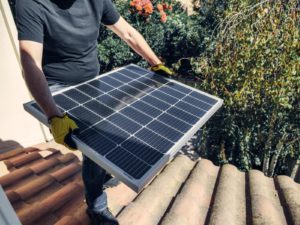
A microgrid is a small-scale electrical grid that can operate independently or in conjunction with the main power grid. It typically includes distributed energy resources such as solar panels, wind turbines, battery storage, and backup generators, which can generate and store electricity locally.
Microgrids are designed to provide reliable and resilient power to specific communities, facilities, or regions. They are often used in areas that are prone to power outages or that are far from the main power grid, such as remote communities, military bases, or hospitals.
The Energy Transition

Supply-Chain Concerns
There are several challenges in the large-scale adoption of alternative energy. The alternative energy must be cheap, abundant, clean, safe, easy to transport, and sustainable. To build energy resilience and reduce the geopolitical risk of energy insecurity, each country should self-sustain and bring the supply chain to their own backyards.
Energy Systems
Today, our predominant energy system is centred around natural gas. In the future, however, multiple systems of energy storage and distribution are foreseen. This includes electricity imports, hydrogen networks, combustion technology and infrastructure, etc.
With the proliferation of alternative energy such as solar, thermal and nuclear, there is an increasing need to design an integrated system that is robust, resilient and reliable – perhaps one that is co-reliant.
The Role of Accelerators in Shaping the Future of Energy
Accelerator programmes drive innovation and expedite the transition of the current energy landscape into a more sustainable one. Startups benefit from active mentorship and guidance from industry professionals, access to resources, connecting with investors, enabling collaboration and cross-pollination, and having a structured framework for innovation. With potential funding, startups with innovative solutions tackling real-world problems are empowered to conduct further research and development, and upscale their ideas.
These innovative ideas may then potentially revolutionise the energy landscape completely – one that is more sustainable.
PETRONAS FutureTech 3.0 Accelerator Programme

One of the initiatives in driving innovation within the energy space is the PETRONAS FutureTech 3.0, powered by StartupX, was launched on 23 Feb 2023. The programme focuses on 5 verticals – Future of Energy and Mobility, Sustainability, Future of Industry and Work, Future of Chemicals and Material, and Frontier Technology. Participants can expect to have access to masterclasses and workshops, mentorship and coaching, business immersion, networking opportunities and fundraising support. Find out more at our website!








